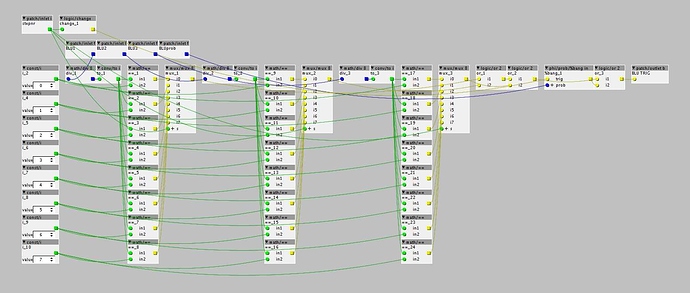I'm building an 8-step sequencer, with 4 controls: three knobs to select three possible "active/on" steps and a general probability knob:
8step.axp (15.2 KB)
The "stepnr" inlet is just an 0-7 counter. The three active step ("BLU1-3") controls work as intended. The probability control ("BLUprob") is giving me trouble though: when probability is turned up to max the final logic OR object suddenly acts like an XOR - instead of triggering every step it triggers every step EXCEPT the ones selected by the 3 "active step" controls, effectively inverting the pattern. Lower probability values work fine.
Any idea what's going on here?

